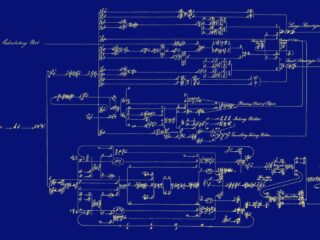Babbage Watches
Babbage watches commemorate Charles Babbage, the inventor of the first mechanical computer, and Ada Lovelace, who has been awarded by history as the first computer programmer.
Our Babbage watches use elements of automation art coming from the 18th century watch industry, that could move figures, make drawings or play music. Transferred to wristwatches, complex microprocessors can create complications that were previously very difficult or impossible to display in wrist watches.
One of the top manufactures in Switzerland has already realized a first prototype of such a microprocessor watch according to Cronatec’s specifications. It works to full satisfaction.
Charles Babbage and the Invention of the Computer
Copying nautical or logarithmic tables is tedious work and even more prone to errors. The English mathematician Charles Babbage therefore suggested to the British Admiralty to build a machine for this purpose. Inspired by the new mechanical looms and by the development of automata in the emerging watchmaking industry. He combined rollers and cams in order to apply mathematical operations, which always remained the same, to different initial values with constant precision. He thus created the first, still purely mechanical calculators in the 19th century. They are the precursors of today’s computers. Ada Lovelace developed the programs to run these machines.
We can miniaturize and extend Charles Babbage’s working principles. In this way, clocks are created that can also reproduce irregular movements as well as forward and backward movements. Babbage clocks are, in a sense, ‘non-linear’ clocks. Their microprocessors open up elements of complex rules (algorithms) to modern haute horlogerie, that we know otherwise from computers.
Copying nautical or logarithmic tables is tedious work and even more prone to errors. The English mathematician Charles Babbage therefore suggested to the British Admiralty to build a machine for this purpose. Inspired by the new mechanical looms and by the development of automata in the emerging watchmaking industry. He combined rollers and cams in order to apply mathematical operations, which always remained the same, to different initial values with constant precision. He thus created the first, still purely mechanical calculators in the 19th century. They are the precursors of today’s computers. Ada Lovelace developed the programs to run these machines.
What is an Algorithm?
What is Automation?
What are Automata?
Charles Babbage
Ada Lovelace
How did the Difference Engine work?
How did the Analytical Engine work?
What is the potential of Babbage watches?
Copying nautical or logarithmic tables is tedious work and even more prone to errors. The English mathematician Charles Babbage therefore suggested to the British Admiralty to build a machine for this purpose. Inspired by the new mechanical looms and by the development of automata in the emerging watchmaking industry. He combined rollers and cams in order to apply mathematical operations, which always remained the same, to different initial values with constant precision. He thus created the first, still purely mechanical calculators in the 19th century. They are the precursors of today’s computers. Ada Lovelace developed the programs to run these machines.







